This Will Do YOur Heart Good
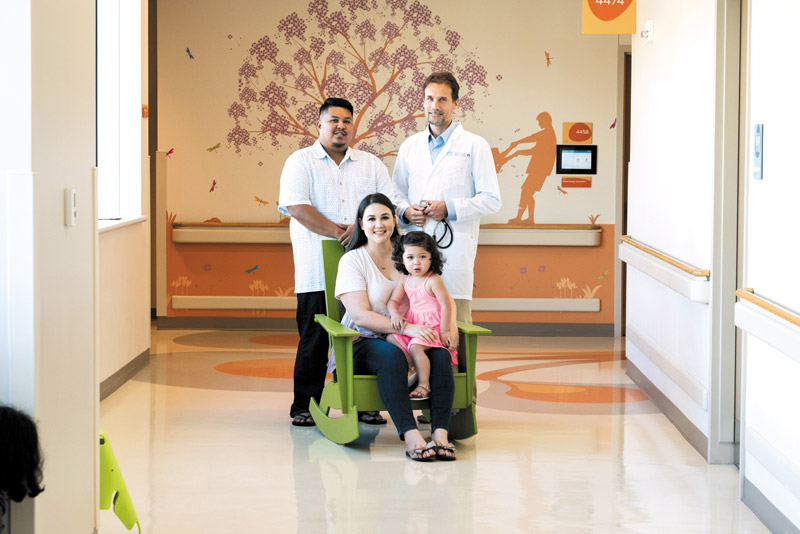
Jared, Kayley and Leila-Rose Coloma with Bratincsak.
Kapi‘olani Medical Center for Women & Children has a Pediatric Heart Center in the works — a game-changer for the 3,000 keiki in the state with heart conditions.
The first — and only — sign that something wasn’t right about Kayley Coloma’s pregnancy was the baby’s heart rate at a routine checkup.
It was off the charts — 265 beats per minute, about 100 more than is normal.
“We had no idea anything was wrong,” Coloma says. “I had a totally normal pregnancy. Everything checked out normal.”
That very day, Coloma was rushed to Kapi‘olani Medical Center for Women & Children, where she had an emergency cesarean section. She and husband Jared were now proud parents of a daughter: Leila-Rose.
But Leila-Rose’s abnormally high heart rate was just the beginning. After the baby was brought to the neonatal intensive care unit, doctors diagnosed her with two congenital heart defects: Ebstein anomaly (which meant her tricuspid valve didn’t work) and Wolff-Parkinson-White syndrome (which was causing her rapid heart rate).
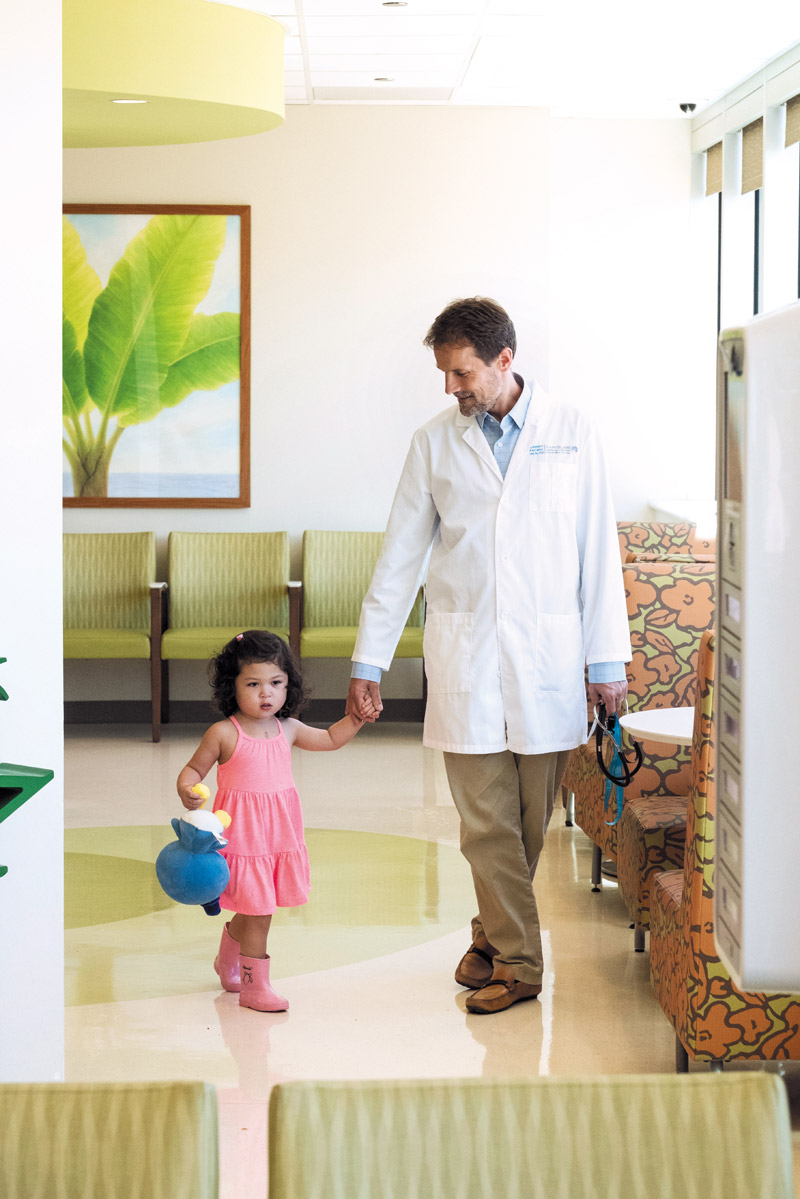
Leila-Rose Coloma and Dr. Andras Bratincsak walk through a waiting room at Kapi‘olani.
The team at Kapi‘olani, including pediatric cardiologist Dr. Andras Brat-incsak, were able to use medication to control her symptoms.
But the Coloma family was ultimately required to fly to San Diego when Leila was just 5 months old for open-heart surgery.
Now, Kapi‘olani, the state’s premier hospital for pediatric care, is working to make sure that Hawai‘i’s families won’t have to make that kind of journey to get their children the care they need. The hospital is in the planning process for a Pediatric Heart Center that will ensure keiki can receive most, if not all, of the cardiology services they will need — right here at home.
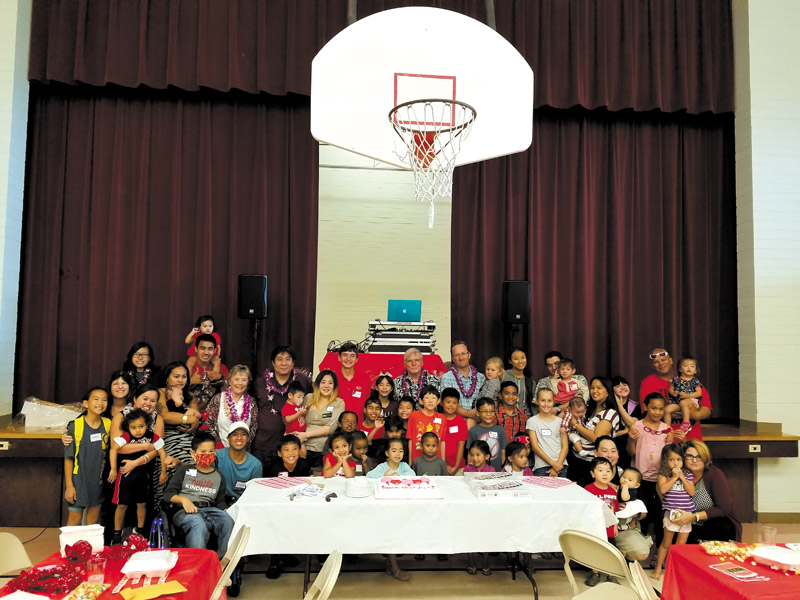
Kapi‘olani Kardiac Kids, a support group consisting of some 100 keiki heart patients, gather for a Valentine’s celebration.
Every year, says Bratincsak, some 180-190 children are born in Hawai‘i with heart disease of some kind. Approximately half that number will require some kind of surgery or procedure to correct their conditions.
Still, getting these keiki the help they need isn’t necessarily easy.
“If you have a minor or smaller heart defect, or less serious heart defect, then we can provide you with all the diagnostic tools here,” Bratincsak explains. “We can provide you with interventional procedures and surgeries — basically, we can provide the entire care we are designed to do … however, the surgery can only happen five times a year, in five weeks.”
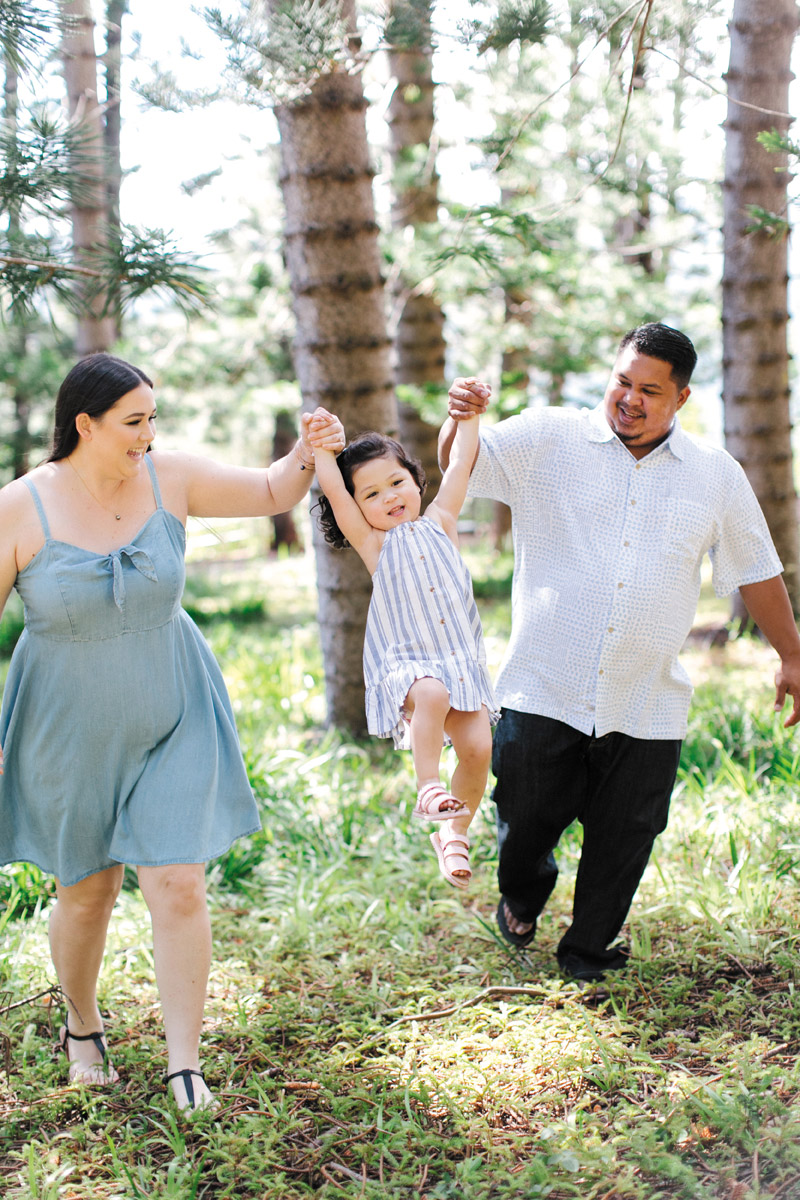
Kayley, Leila-Rose and Jared Coloma enjoy a day in the woods. PHOTOS COURTESY KAPI‘OLANI HEALTH FOUNDATION
Kapi‘olani simply does not have the facilities necessary to regularly perform pediatric heart surgeries or catheterizations. So, since 1995, Kapi‘olani has teamed up with Straub Medical Center for five Heart Weeks every year to bring a pediatric surgeon to Straub’s advanced facilities and perform surgeries for children. Some 80 surgeries and procedures get done annually through this collaboration.
“If you fall out of that range, if you have heart disease — even if it’s small — that requires treatment within a week or a month, you might not fall into that Heart Week, and you cannot get your heart surgery here, and you have to travel to the mainland,” Bratincsak says.
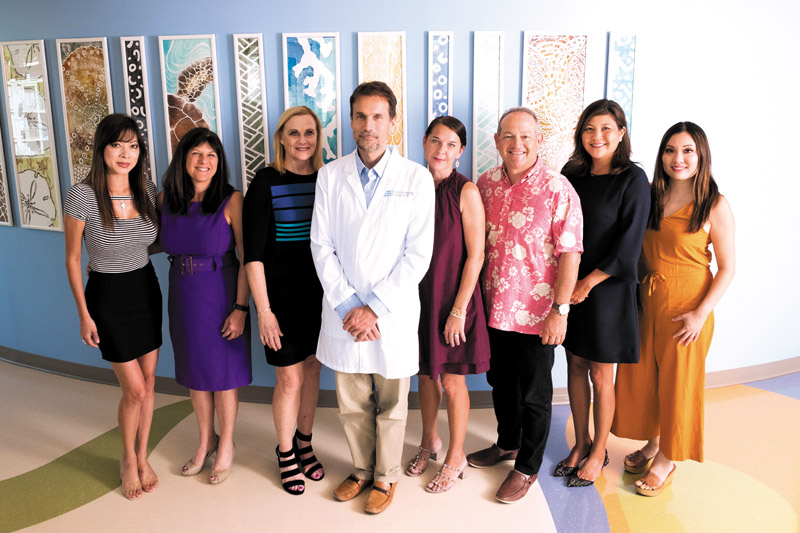
Kapi‘olani Health Foundation fundraising committee members include Kathy Carr, Laura Bonilla, Martha Smith, Dr. Andras Bratincsak, Karen Polivka, Jeff Arce, Dawn Dunbar and Emily Naula.
The situation is worse for those with severe heart conditions, he says. The team at Kapi‘olani can do diagnostic procedures and start patients on medication, but interventional work must be done on the mainland.
“In some cases, that requires six months on the mainland, not four weeks — up to six months,” Bratincsak says. “Imagine yourself: no job, lucky if your employer will say, ‘Oh sure, we’ll get you back in six months,’ in a stressful situation away from home, in a Ronald McDonald House at best.
“And that’s the current reality.”
This best-case scenario is also Leila-Rose’s, exactly.
The family stayed at a Ronald McDonald House in California for about three weeks while Leila-Rose recovered, and Coloma says they were lucky to have had some relatives in the area to support them at the time.
“We were lucky,” she says. “We were a special situation.
“A lot of families don’t have that. A lot of families don’t have the luxury to put their lives on hold or put their jobs on hold to fly and do these things without repercussions.”
he future Kapi‘olani Pediatric Heart Center will address these concerns. “We’re in the planning phase,” explains Martha Smith, CEO of Kapi‘olani Medical Center for Women & Children. “We’re actually working with a team of what we call our stakeholders — our cardiologists, interventional radiologists and staff that would be running the area — to pick out the equipment.”
From there, the hospital will enter the design and permitting phase, with construction set to begin next year.
Smith says that the hospital hopes to raise $10 million for the Pediatric Heart Center, and things are bright so far: They’ve already raised $5 million, and nearly all of Kapi‘olani Health Foundation’s fundraising efforts for the next year will be devoted to the center. For example, next week’s Kapi‘olani Soiree will donate all of its proceeds to the project — an estimated $500,000.
The hope is that the facility will be up and running in 2021.
“Our goal would be 90 percent of children would have their procedures, whether diagnostic or interventional in the cath lab or surgical procedures, staying here at Kapi‘olani, on the island,” Bratincsak says.
The presence of Kapi‘olani Pediatric Heart Center will impact the approximately 3,000 keiki and young adults living in Hawai‘i with heart conditions — including Leila-Rose, now 2 years old.
“She’s actually doing really amazing,” Coloma says. “She’s totally normal in the sense that if you didn’t know her story and didn’t know everything she’s gone through, you would never know.
“She’s going to need more surgeries, and I’m really hoping that by the time she needs a second or a third, that we’d be able to do it here — we won’t have to fly to California again.”





